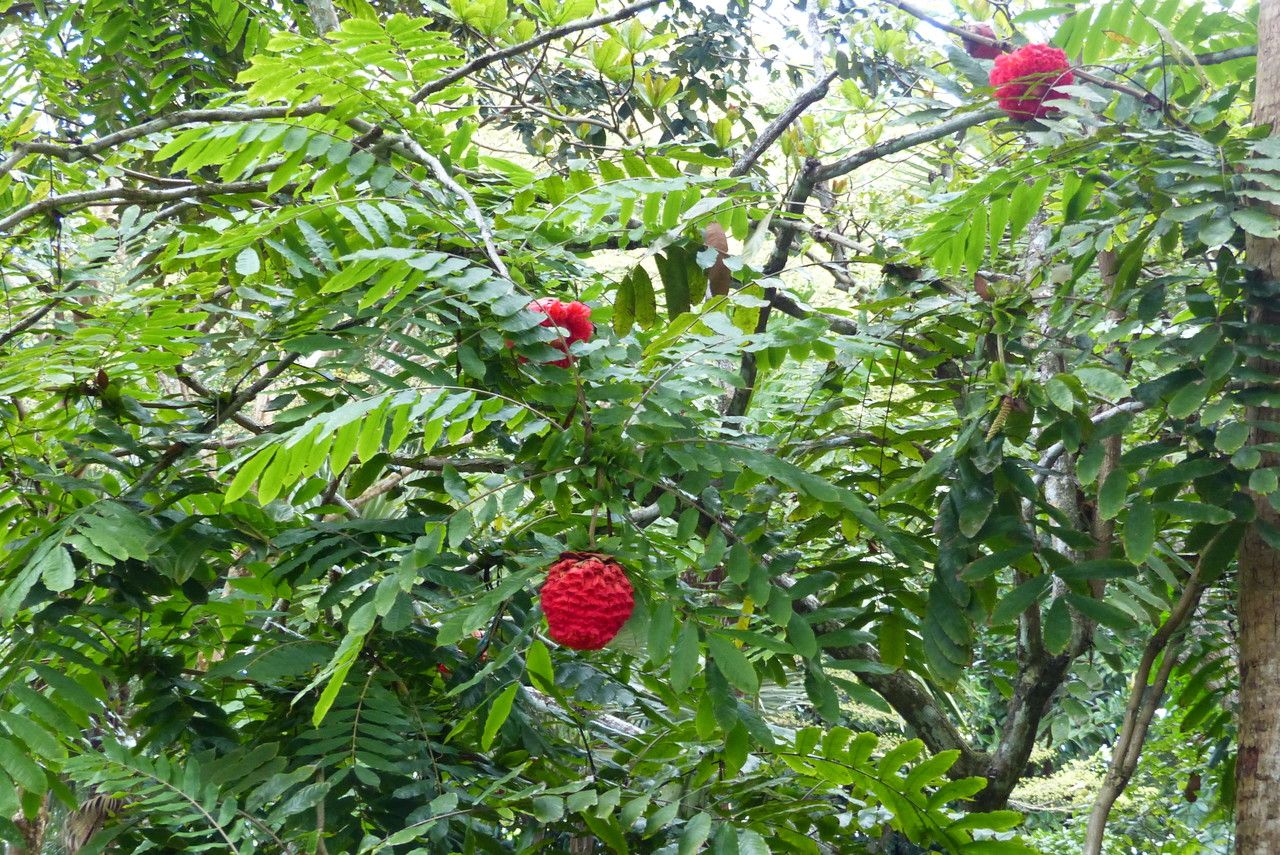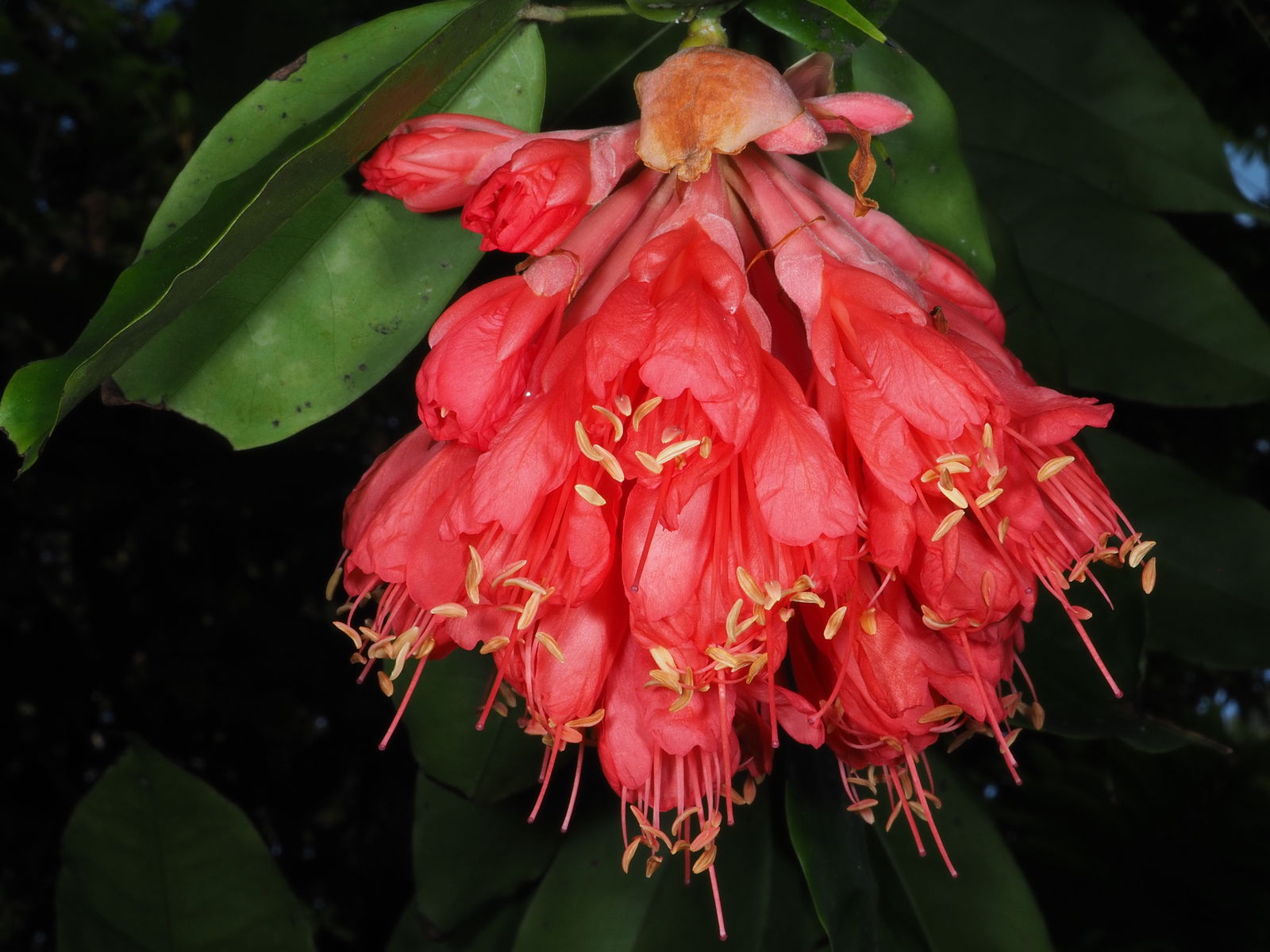Red-flowered Brownea
brownea grandiceps
Also known as: ["Brownea inapodada","Brownea roja"]
Overview
A tropical tree known for its large, showy, bright red flowers that bloom in clusters, native to Central and South America.
Benefits & Perks
["fragrant flowers","wildlife attractant (bees, butterflies, birds)","aesthetic foliage"]
Botanical Classification
| Phylum: | Magnoliophyta |
| Class: | Magnoliopsida |
| Order: | Fabales |
| Family: | Fabaceae |
| Genus: | Brownea |
| Botanical Name: | Brownea grandiceps |
Plant Characteristics
Basic Information
- Category: Trees
- Suitable Location: indoor pot in bright, indirect light or outdoor sheltered spot in tropical gardens
- Suitable For:
- Is Weed: No
- Allergenicity: low
Environmental Needs
- Climate: {"temperatureRange":"18–30°C"}
- Hardiness: {"zones":"10–11"}
- Misting: every 2–3 days to maintain moderate humidity, especially in dry environments
- Drainage: Fast-draining to prevent waterlogging.
- Soil Type: Well-draining mix of loam, sand, and organic matter with good aeration.
Maintenance Level
- Maintenance Level: moderate
- Toughness Level: moderate
- Pruning Frequency: Annually in late winter or early spring before new growth begins.
- Pruning Intensity: Moderate; remove up to one-third of old growth to rejuvenate the plant.
Care Details
Ideal Sunlight Coverage:
Bright indirect light for 6–8 hours daily; adjust to morning sun exposure in summer to prevent leaf burn.
Sunlight Tolerance Tips:
Acclimate gradually to direct sunlight, shield from harsh afternoon sun, and place in a location with filtered light for optimal growth.
Care Requirements
Care Difficulty
moderatemoderate
Sunlight
partial shade to full sun with protection from intense afternoon sun
Rotate plant weekly for even light exposure; use sheer curtains to filter intense sunlight; avoid placing near east-facing windows in summer.
Watering
every 7–10 days during active growth, reducing to every 14–21 days in winter
Water thoroughly until it drains from the bottom, allow soil to dry between waterings, and avoid wetting foliage to prevent fungal issues.
Soil
well-draining, fertile, slightly acidic soil with organic matter
pH: Slightly acidic to neutral (pH 6.0–7.0).
Use a mix with 40% organic matter, 40% loam, and 20% sand; avoid heavy clay soils; top-dress with compost annually.
Temperature
Prefers 65–85°F (18–29°C); tolerates brief dips to 50°F (10°C) but thrives in warm, stable conditions.
Avoid drafts; maintain stable temperatures; protect from sudden temperature swings.
Fertilizing
every 4–6 weeks during spring and summer with balanced liquid fertilizer, none in winter
Fertilize after watering to prevent root burn; flush soil occasionally to remove salt buildup; avoid over-fertilizing to prevent nutrient toxicity.
Propagation
Methods
Stem cuttings with at least two nodes, or seeds from mature pods.
Step-by-Step Propagation Guide
- Select healthy stem, cut below node, apply hormone, plant in medium, maintain humidity, and wait for roots.
Best Time: Spring or early summer when the plant is actively growing.
Environment
High humidity (70–80%), warm temperatures (75–85°F), and indirect light.
Medium
Well-draining mix of peat, perlite, and sand; or cactus mix with added rooting hormone.
Hormone
Recommended to promote faster root development.
Timeline
Roots develop in 4–8 weeks; establishment may take 3–6 months.
Tools Needed
Pruning shears, rooting hormone, propagation tray, humidity dome, well-draining medium
Quick Tips
Use sterile tools to prevent disease; maintain consistent moisture; provide bottom heat for faster rooting.
Pruning & Repotting
Pruning Guide
Method
Selective thinning of branches, cutting just above a leaf node or lateral branch.
Pruning Plan
Remove dead or overgrown branches to improve airflow, shape, and encourage new growth.
Tools
Pruning shears, loppers, gloves, disinfectant
Checklist
Disinfect tools, prune dead/damaged growth, shape evenly, clean up debris
Repotting Guide
Best Season
Early spring before active growth begins.
Pot Size
Increase pot size by 2–3 inches in diameter; ensure drainage holes are present.
Method
Remove plant gently, trim roots if needed, place in slightly larger pot with fresh soil, and water lightly.
Suggestions
Repot every 2–3 years or when roots outgrow the pot to refresh soil and provide space.
Checklist
Check root bound status, prepare new pot, trim roots, add fresh soil, water lightly
Advanced Care Tips
Watering Mastery
Watering Checklist
Check soil moisture, water deeply, ensure drainage, avoid foliage wetting
How to Apply Water Properly
Water directly at the root zone, ensuring even saturation to a depth of 6–8 inches, and allow excess water to drain completely to prevent waterlogging.
Watering Schedule Tips
Water deeply once the top inch of soil feels dry; reduce frequency in winter to prevent root rot.
Soil Improvement
Add perlite or coarse sand for drainage; incorporate compost for fertility; ensure aeration with chunky organic matter.
Temperature Stress Management
Signs of Temperature Issues
Leaf drop, yellowing, or stunted growth in cold; wilting or scorching in excessive heat.
Cold Stress
Slows metabolic processes, reduces nutrient uptake, and can lead to root damage or death in prolonged cold.
Solution: Move to a warmer location, insulate roots with mulch, and avoid overwatering to prevent cold-induced root rot.
Hot Stress
Causes leaf scorch, dehydration, and wilting due to excessive transpiration and heat stress.
Solution: Provide shade during peak heat, increase humidity, and water deeply but infrequently to maintain root health.
Fertilizing Guide
Fertilizing Checklist
Check season, dilute fertilizer, water before feeding, flush periodically
Fertilizing Method
Use balanced liquid fertilizer diluted to half strength every 4–6 weeks during growing season (spring–summer); cease in fall–winter.
Common Problems & Solutions
Toxicity Warning
Cats
ToxicCats are highly sensitive to the toxic compounds in Brownea grandiceps. Ingestion of even small amounts of the seeds or bark can lead to severe poisoning, with effects ranging from gastrointestinal distress to potentially fatal systemic toxicity.
⚠️ Symptoms:
🌿 Toxic Parts:
⚡ Toxic If:
if eaten
Dogs
ToxicIn dogs, ingestion of Brownea grandiceps, particularly the seeds and bark, can lead to significant toxicity. The plant's compounds can cause severe gastrointestinal upset and may result in more serious systemic effects, such as neurological disturbances, depending on the amount consumed.
⚠️ Symptoms:
🌿 Toxic Parts:
⚡ Toxic If:
if eaten
Humans
Slightly ToxicBrownea grandiceps contains toxic compounds that can cause mild to moderate gastrointestinal distress and other systemic effects upon ingestion. The seeds and bark are particularly concentrated with these compounds, which can interfere with normal digestive processes and potentially affect the nervous system if consumed in large quantities.
⚠️ Symptoms:
🌿 Toxic Parts:
⚡ Toxic If:
if eaten
Frequently Asked Questions
Q: How often should Brownea grandiceps be watered?
A: Water moderately, allowing the soil to dry slightly between waterings, especially during the growing season.
Q: Does Brownea grandiceps require full sun?
A: Yes, it thrives in full sun to partial shade, but prefers bright light for optimal flowering.
Q: Is Brownea grandiceps suitable for indoor cultivation?
A: It is primarily an outdoor tree due to its size and tropical requirements, but can be grown in large containers indoors with adequate light and space.
Quick Reference
| Family: | Fabaceae |
| Care: | moderate |
| Light: | partial shade to full sun with |
| Water: | every 7–10 days during activ |
Get Expert Care Tips
Download the Plantious app for personalized care reminders and plant identification!
Google Play App Store








